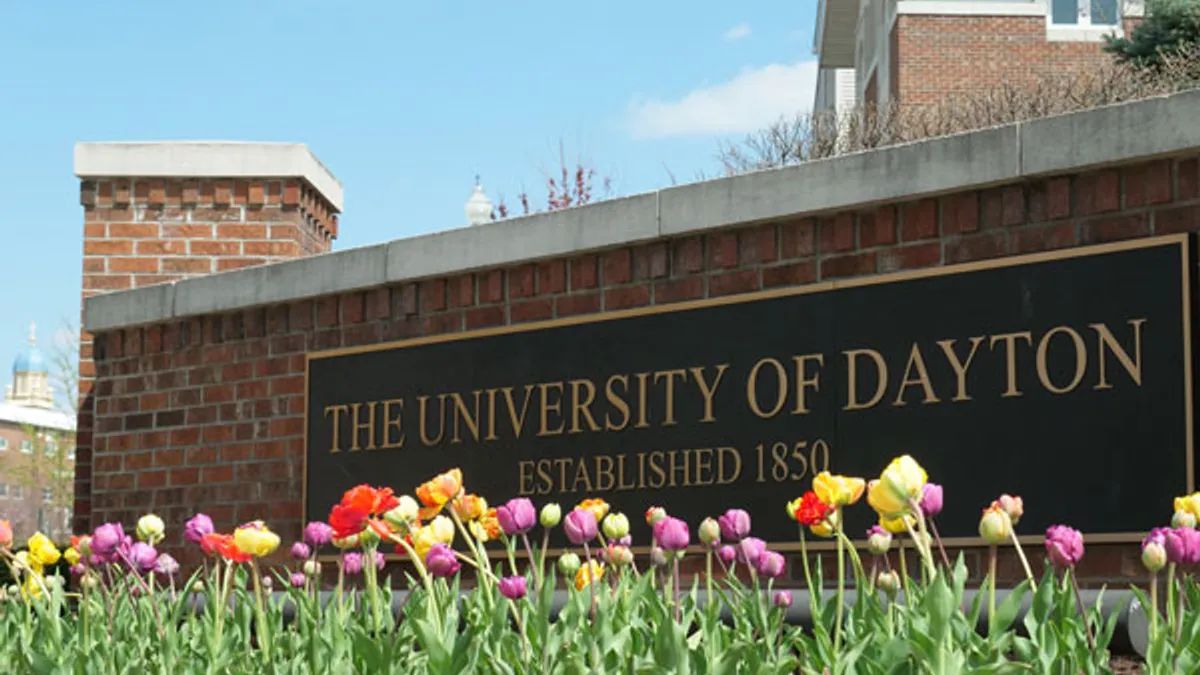Dive Brief:
- The University of Dayton won’t renew some faculty contracts for the 2025-26 academic year as the private Catholic institution seeks to ensure its financial sustainability.
- The Ohio university is still determining how many roles will not be renewed, officials said in a message to faculty and staff on Friday. Affected faculty will be notified by March 15, the date the university typically issues new contracts for the next academic year.
- Officials are also weighing academic cuts following a recommendation from the university's graduate academic affairs department. Up to 20 master’s programs and three doctoral programs could be eliminated or consolidated as the university shifts its focus to undergraduate education.
Dive Insight:
In their message to campus, Dayton officials framed the coming cuts as necessary steps to keep the university healthy and operating “from a position of relative institutional strength” over the long term.
They invoked a litany of woes facing colleges around the country, particularly private institutions in regions including the Midwest.
“Today, there are fewer high school graduates; we face fierce price competition from flagship public universities; fewer people believe in the value of higher ed; international enrollment is down; and inflation, higher interest rates and other economic challenges negatively impact many families’ ability or willingness to pay private tuition,” they wrote.
But the officials — President Eric Spina, Provost Darlene Weaver and Andy Horner, executive vice president for business and administrative services — also noted that the university isn’t operating at a deficit, in contrast to the situation at many institutions cutting programs and employees this year.
For the fiscal year ending June 2023, Dayton ran a $35.9 million total operating surplus, down from $44.8 million the year before, according to its latest financials.
Also unlike many colleges paring back their faculty, programs and cost structures, including other religious institutions, Dayton’s enrollment grew in recent years, with fall headcount rising by nearly 800 to 11,674 students during the five years between 2017 and 2022.
Nonetheless, Dayton officials pointed to an “uncomfortably thin” operating margin and pressures on the university’s annual budget. “We must bring our expenses in line with the realities of the current market,” they said.
They noted that the institution has already reduced employee headcount through attrition and incentives, but said more action was necessary. “Deferring these decisions puts our mission at risk and only results in larger reductions later, impacting more faculty and staff,” they said. As of 2022, the institution had 674 faculty total, according to federal data.
The program review and consolidation is also part of the ongoing effort to manage costs. Regarding the 23 programs flagged for discontinuation or consolidation, officials said, “Ultimately, we hope that the various faculties will choose to bring these and other graduate programs forward for suspension.”
Each of the master’s programs, they noted, averaged just four or fewer students and the doctoral programs had one or no students.
Facing disruptions to demand for college, the university is also looking to proactively shrink its undergraduate student body by 10% to 15% — i.e., back to 2012 levels.
“This is partly in response to demographic changes, but it’s also a move to foster the rich connections between faculty and students, strengthen our already-high graduation rate of 82%, and continue to prioritize access for middle-class and lower-income families,” Spina said in a June op-ed.















